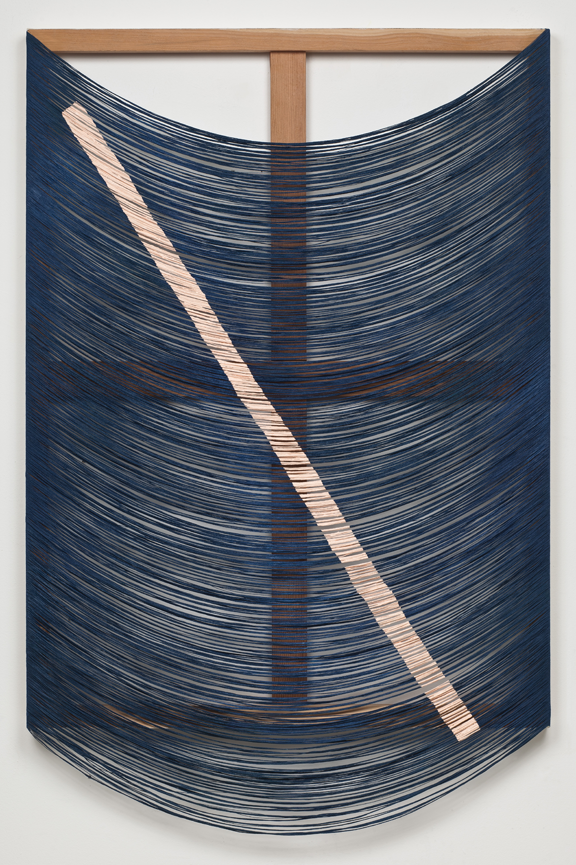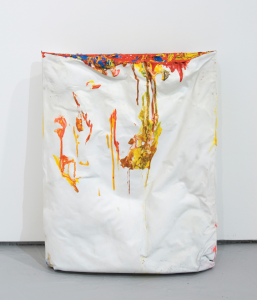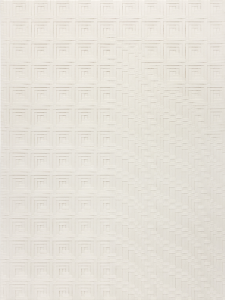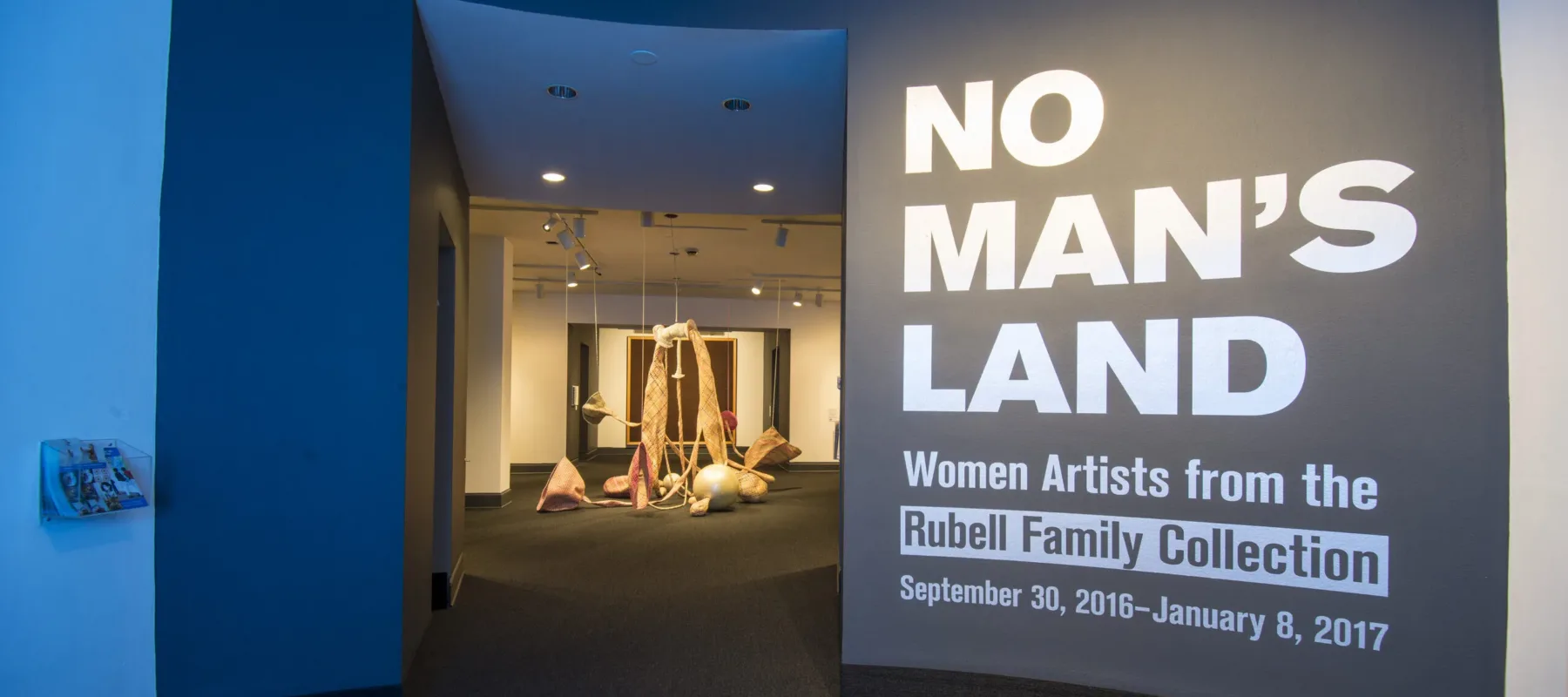Contemporary large-scale paintings and sculptural hybrids are on view in NO MAN’S LAND: Women Artists from the Rubell Family Collection. The exhibition imagines a visual conversation between 37 women artists from 15 countries exploring images of the female body and the physical process of making. Dianna Molzan, Tauba Auerbach, and Analia Saban blur the line between painting and sculpture through their experimental approaches to conventional materials and techniques.

What’s On View?
Dianna Molzan’s Untitled, 2010
Dianna Molzan (b. 1972, Tacoma, Washington) says, “I’m definitely a painter. . . . But it’s fun to see how far I can push things.” Molzan uses traditional materials like canvas, wood, pigment, and brushes to create paintings that are often described as sculptural. Her restructured canvases highlight the “drama of presentation” while challenging conventions of painting.
Molzan’s investigations of painting defy expectations. One of her untitled works on view embraces three-dimensionality by revealing the wooden supports and gallery walls beneath unraveled canvas. The space itself becomes a part of her piece, while referencing the history of painting. In describing her smart and playful works, Molzan says, “I’ve likened them to paintings in drag. . . . I’m trying to do my best impersonation.”
Analia Saban’s Acrylic in Canvas, 2010
Analia Saban (b. 1980, Buenos Aires, Argentina) often blurs the line between mediums “in a way that deconstructs and re-visualizes the very process of art-making.”

Acrylic in Canvas consists of a canvas bag filled with vibrantly colored acrylic paint. Propped up against a wall, the work combines the traditional ingredients of painting in a new way that questions the medium’s boundaries. Saban sometimes describes her work as “the process of sculpture applied to a painting.”
Saban’s work complicates conventional ideas about painting. “Usually we think of painting on canvas,” she says. “It was interesting to think of painting as pigment on thread.”
With a playful title just one letter away from describing a traditional form of painting, Acrylic in Canvas reminds viewers how flexible borders between seemingly discrete categories can be.
Tauba Auerbach’s Slice II, 2012

Slice II, by Tauba Auerbach (b. 1981, San Francisco, California), explores the boundaries between text and meaning, appearance and reality, and two and three dimensions. Working in a wide range of mediums, Auerbach expresses interest in structure, technology, and binaries.
A woven canvas on a wooden stretcher, Slice II resembles a conventional abstract painting at first glance. However, the canvas is not painted, and her weaving process is more closely akin to a sculptural technique. Auerbach says these works have “a teeter-tottering quality: they oscillate between being flat surfaces and 3D objects.”
Visit the museum and explore NO MAN’S LAND, on view through January 8, 2017. Reserve your spot to meet artist Analia Saban at NMWA on November 11, 2016 for a special in-gallery conversation.

